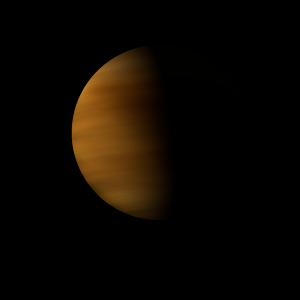|
|
Space Astro
|
Info for exoplanet "Dyat"
| Scientific (actual) data |
|---|
| Name | OGLE-2019-BLG-0468L c |
| Planet status | Confirmed |
| Planet mass | 10.22 |
| Semi major axis | 2.77 |
| Discovered | 2021 |
| Updated | 2021-11-22 |
| Publication | Published in a refereed paper |
| Detection type | Microlensing |
| Star name | OGLE-2019-BLG-0468L |
| Right ascension | 266.4° |
| Declination | -24.45° |
| Star distance | 4400 |
| Star mass | 0.92 |
| Wikipedia article | OGLE-2019-BLG-0468L c |
Back
| |
| Fictional info (?) |
|---|
| Suggested name | Dyat |
| Planet type | Huge cold gas giant |
| When viewed from Earth, this proximity to OGLE-2019-BLG-0468L means the planet can only be seen near the western or eastern horizon during the early evening or early morning. |
| Atmosphere | Hydrogen chloride | 84% |
| Methane | 7.7% |
| Argon | 7.7% |
| Krypton | 0.34% |
| Atmospheric pressure | 6 bar |
 |
| No known satellites |
| Google search for Dyat |
|
Website by Joachim Michaelis
|
|
|
|